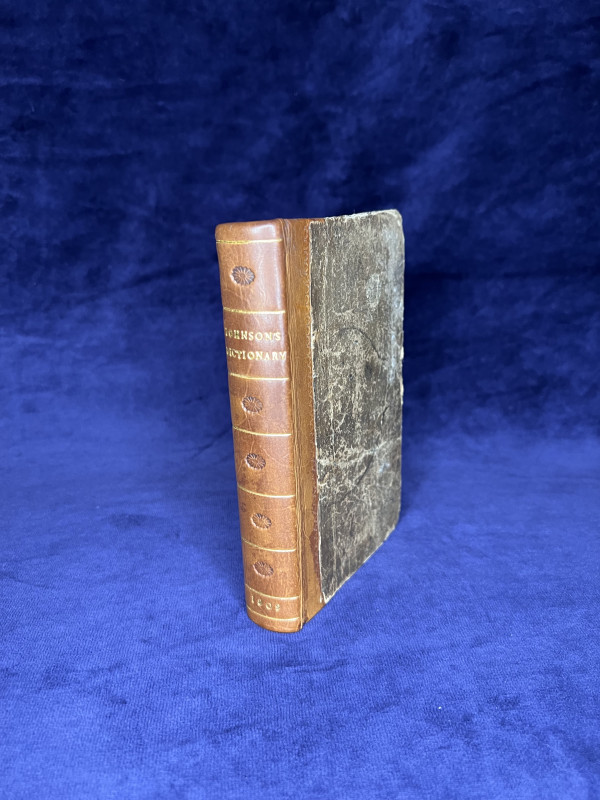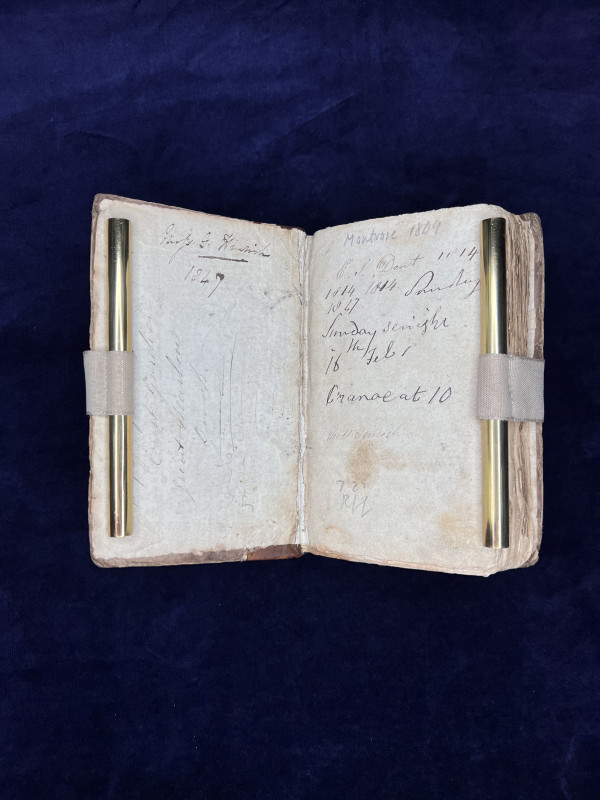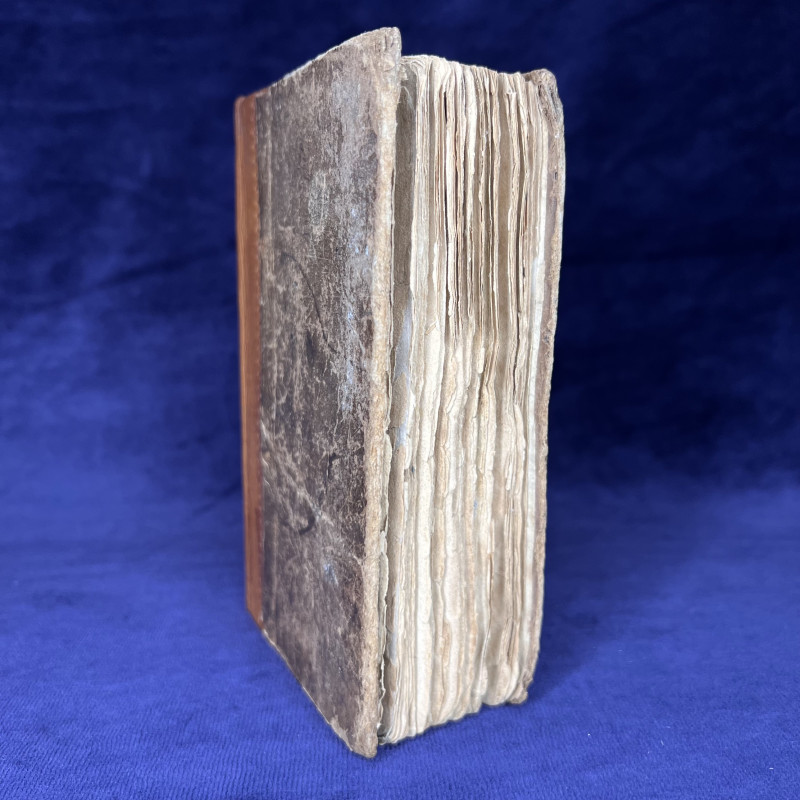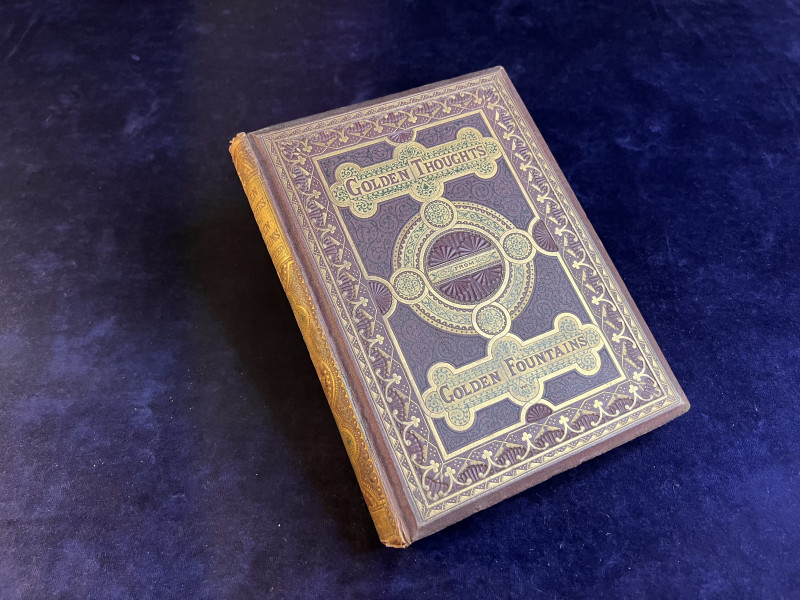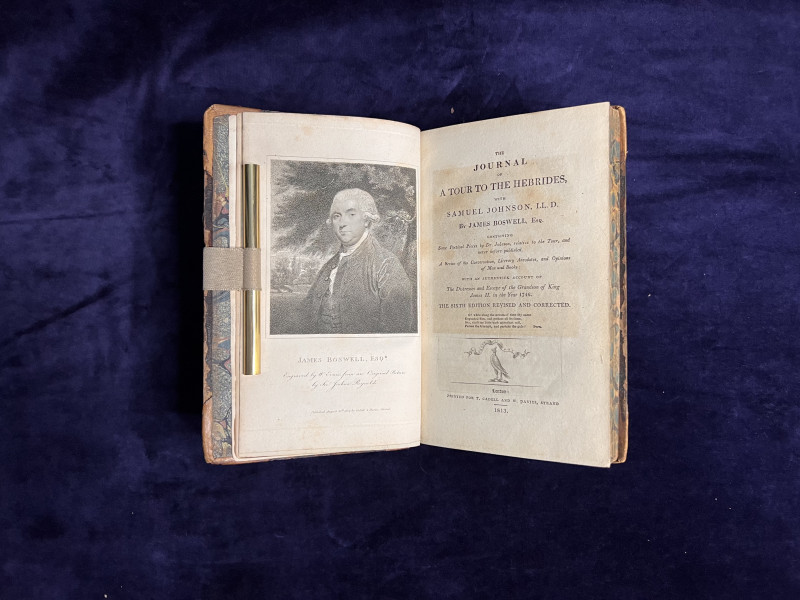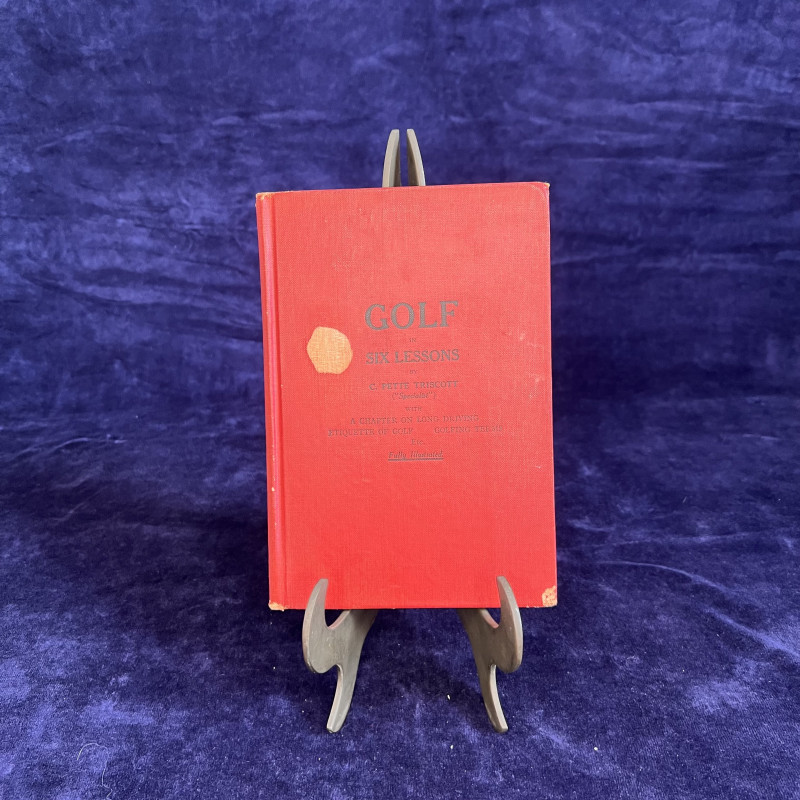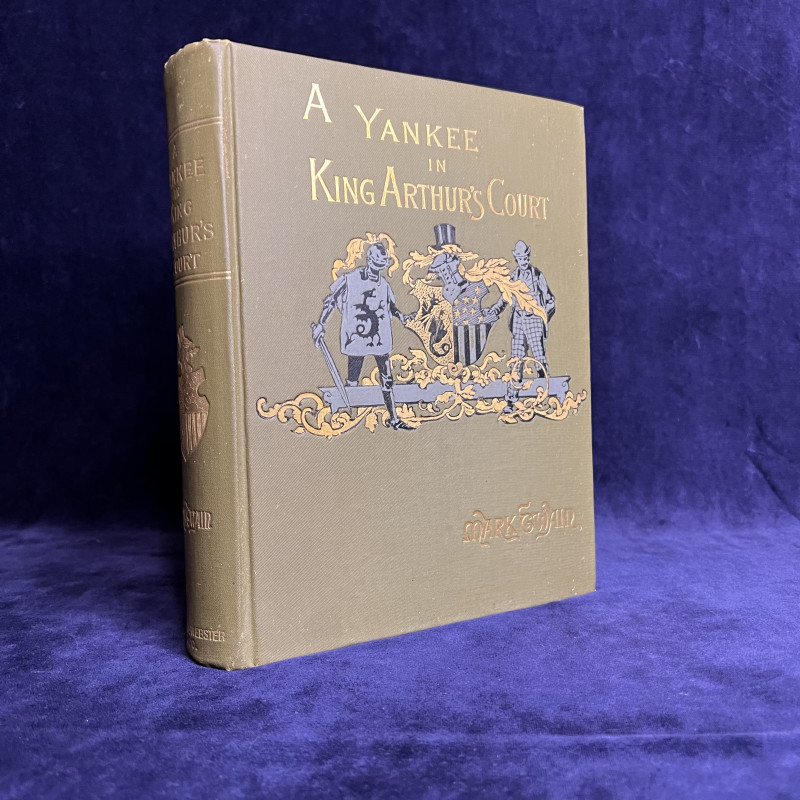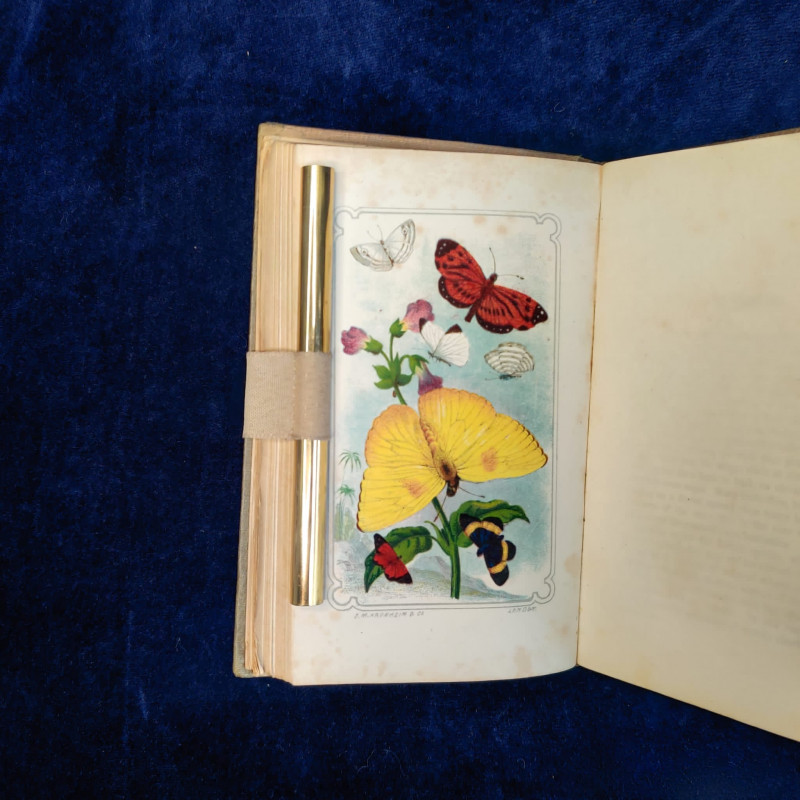Johnson’s dictionary of the English Language in Miniature to which are added, an alphabetical account of Heathen Deities; A List of the Cities, Boroughs, and Market Towns in England and Wales...
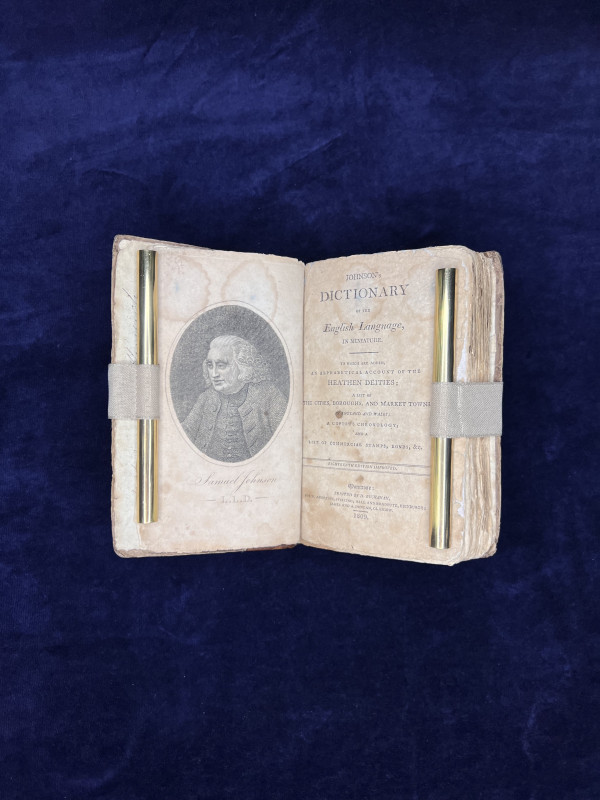



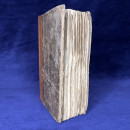
Book Description
Johnson’s dictionary of the English Language in Miniature to which are added, an alphabetical account of Heathen Deities; A List of the Cities, Boroughs, and Market Towns in England and Wales; A Copious Chronology; and a List of Commercial Stamps, Bonds, &c. Eighteenth Edition Improved. Montrose; Printed by D. Buchanan, 1809.
pp. 284. Front and last page historically reinforced. Frontis portrait of Johnson. Deckled edges, rounded at corners. Half-calf (restored) and historic board. Ownership inscriptions from at least three hands on front and back fly leaves. Overall GOOD to VERY GOOD condition.
Dealer Notes
This book provides a three-fold site of historic interest: the location of printing, the provenance, and the content.
Regional printers equalised the diffusion of literature and knowledge in Scotland. Rather than relying on the central cities, such as Edinburgh and Glasgow, smaller printers served their communities by providing speedy prints of all sorts of books. In 1784, G. Johnston set up as first printer in Montrose, a small town between Dundee and Aberdeen. Shortly afterwards, he was joined by other printers, such as D. Buchanan and James Watt. These regional printers were not able to print at the same capacity as their urban counterparts, therefore the regional prints are often far rarer.
The provenance of this book is sweet. On the front flyleaf, E. S. Dent has written her name. Eliza Susanna Dent (1799- 1877) was born in Hallaton, Leicestershire. In 1828, she married Sir Henry Bromley Hinrich, who was knighted in 1831 at the coronation of William IV. They had two sons and five daughters. One of these daughters was Georgina Hinrich, to whom Eliza gave this book. Georgina has written her name in both the front and back. She has included the known family residence of Court Garden, Great Marlow, Bucks, but she has also included several more locations: Aberdeen Villa, Aberdeen Place, Maida Hill (now known as Maida Vale in London). While the family’s connection to Aberdeen is not clear, this location does explain how and why and English family would come into a regional Scottish printed dictionary.
The savage wit of Blackadder takes to task the task of compiling every single word in our “post-Norman tongue”. Blackadder congratulates Dr. Johnson on having not left out a single word, gracefully interpolating neologisms to taunt the doctor and demonstrate his lacunae. Alas, art and truth are entwined. “X is a letter which though found in Saxon words, begins no word in the English language.” Good thing this dictionary wasn’t embellished with xylographs! Give me a minute while I sail my xebec over to some xeric oak habitat and examine the xylem of some trees with xanthic leaves, while taking samples with my xiphoid xyster!
Regional printers equalised the diffusion of literature and knowledge in Scotland. Rather than relying on the central cities, such as Edinburgh and Glasgow, smaller printers served their communities by providing speedy prints of all sorts of books. In 1784, G. Johnston set up as first printer in Montrose, a small town between Dundee and Aberdeen. Shortly afterwards, he was joined by other printers, such as D. Buchanan and James Watt. These regional printers were not able to print at the same capacity as their urban counterparts, therefore the regional prints are often far rarer.
The provenance of this book is sweet. On the front flyleaf, E. S. Dent has written her name. Eliza Susanna Dent (1799- 1877) was born in Hallaton, Leicestershire. In 1828, she married Sir Henry Bromley Hinrich, who was knighted in 1831 at the coronation of William IV. They had two sons and five daughters. One of these daughters was Georgina Hinrich, to whom Eliza gave this book. Georgina has written her name in both the front and back. She has included the known family residence of Court Garden, Great Marlow, Bucks, but she has also included several more locations: Aberdeen Villa, Aberdeen Place, Maida Hill (now known as Maida Vale in London). While the family’s connection to Aberdeen is not clear, this location does explain how and why and English family would come into a regional Scottish printed dictionary.
The savage wit of Blackadder takes to task the task of compiling every single word in our “post-Norman tongue”. Blackadder congratulates Dr. Johnson on having not left out a single word, gracefully interpolating neologisms to taunt the doctor and demonstrate his lacunae. Alas, art and truth are entwined. “X is a letter which though found in Saxon words, begins no word in the English language.” Good thing this dictionary wasn’t embellished with xylographs! Give me a minute while I sail my xebec over to some xeric oak habitat and examine the xylem of some trees with xanthic leaves, while taking samples with my xiphoid xyster!
Author
JOHNSON, Samuel
Date
1809
Binding
Half-calf (restored) and historic board.
Publisher
Montrose; Printed by D. Buchanan,
Condition
VERY GOOD
Pages
pp. 284
Friends of the PBFA
For £10 get free entry to our fairs, updates from the PBFA and more.
Please email info@pbfa.org for more information
